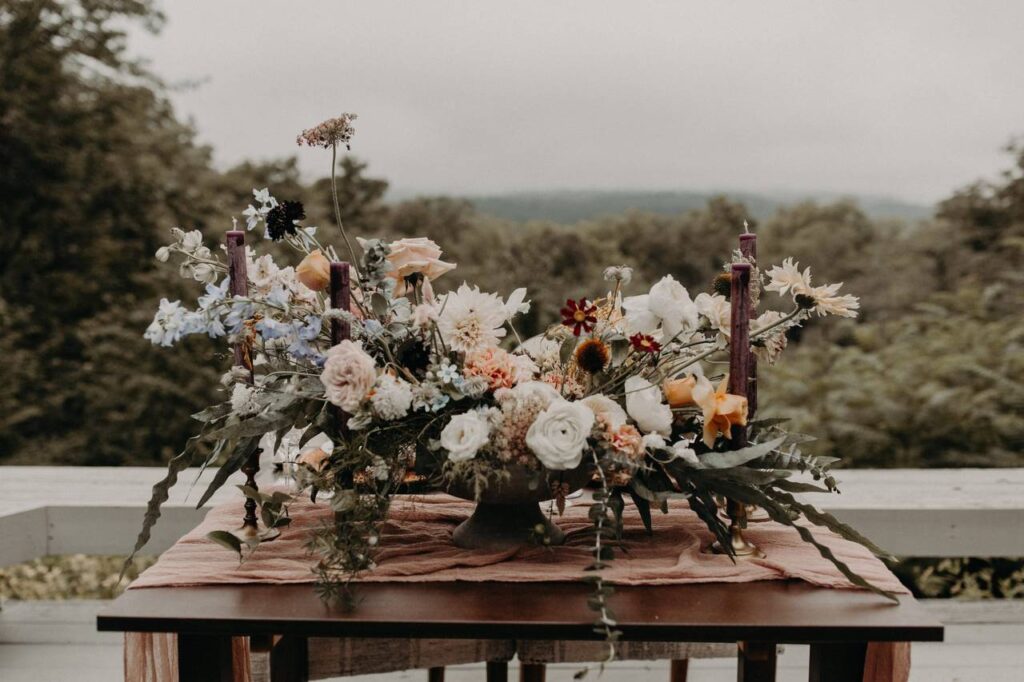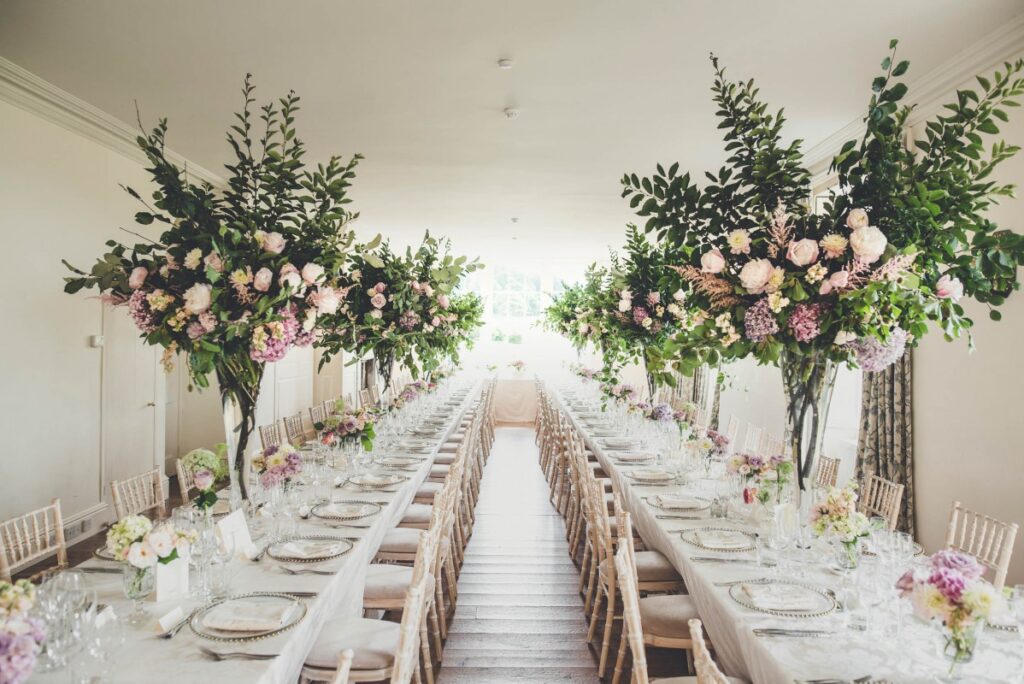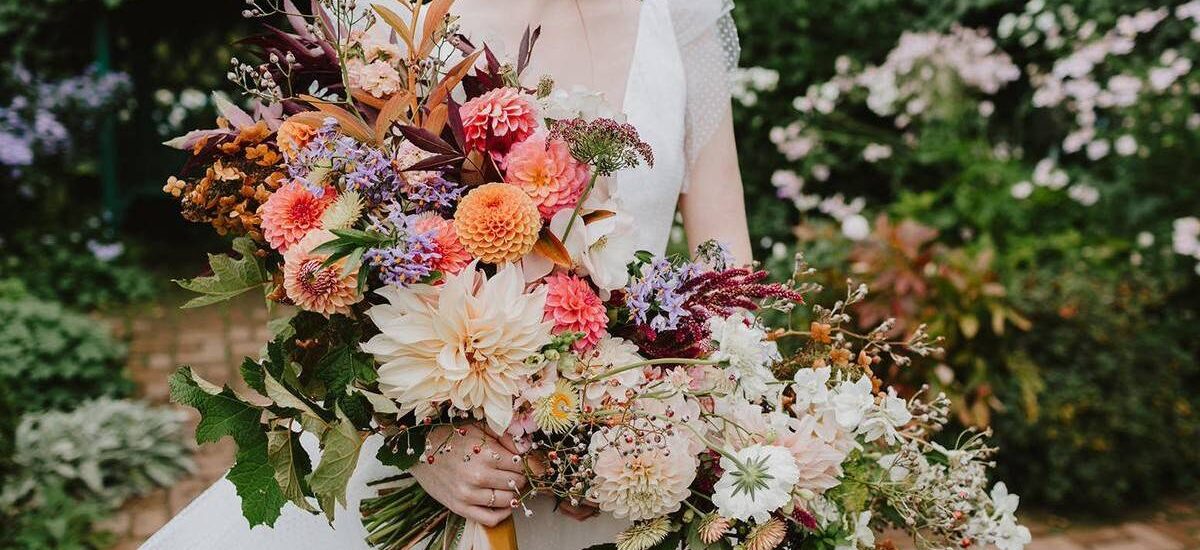Weddings are a celebration of love and unity, and every detail is carefully chosen to reflect the couple’s unique love story. One aspect that often carries deep symbolic meaning is the selection of wedding flowers. These beautiful blooms have been used throughout history to convey emotions and messages, allowing couples to express their feelings through the language of flowers.
Understanding the Symbolism of Wedding Flowers
Before diving into the historical significance of wedding flowers Australia, it is important to understand the symbolism behind these floral arrangements. Flowers have long been associated with different emotions and qualities, making them a perfect tool for expressing love, joy, and devotion.
Each flower has its own unique symbolism, conveying a specific message. Whether it’s the innocence represented by lilies or the passion embodied by red roses, every wedding flower choice holds a deeper significance.

But what about the lesser-known flowers? The ones that often go unnoticed but carry a hidden meaning that can add a touch of magic to your special day? Let’s explore some of these hidden gems.
One such flower is the forget-me-not. As the name suggests, it symbolizes true love and memories that will never fade. Including forget-me-nots in your wedding bouquet or floral arrangements can serve as a beautiful reminder of the everlasting bond you share with your partner.
The Historical Significance of Wedding Flowers
Throughout history, wedding flowers have played a significant role in various cultures and traditions. Ancient civilizations believed that flowers had the power to bring good fortune, protect against evil spirits, and ensure fertility.
In ancient Greece, brides carried bouquets of herbs and flowers to ward off evil spirits and symbolize new beginnings. In the Victorian era, the meaning behind each flower became more defined, giving birth to the concept of the “language of flowers.”
During this time, suitors would send secret messages to their beloveds through carefully chosen floral arrangements. From roses symbolizing love and passion to daisies representing innocence, this language allowed couples to communicate their emotions without speaking a word.
But did you know that certain flowers were also used for their medicinal properties? For example, lavender was often included in wedding bouquets not only for its delightful fragrance but also for its calming effects. It was believed to bring peace and tranquility to the couple as they embarked on their journey together.
Decoding the Language of Flowers
While the language of flowers might have faded from everyday conversations, its influence on wedding flower choices remains strong. Every couple can use this symbolic language to create a bouquet that tells their own unique love story.
A bride seeking to convey eternal love and devotion may opt for classic red roses, while a couple celebrating purity and new beginnings may choose white lilies. Each flower carries a multitude of meanings, allowing couples to express their emotions through these delicate petals.
So, the next time you find yourself choosing wedding flowers, take a moment to consider the hidden meanings behind each bloom. Let your floral arrangements speak volumes about your love, hopes, and dreams as you embark on this beautiful journey together.
The Role of Flowers in Wedding Ceremonies
Flowers are not just beautiful accessories at weddings; they play an integral role in the ceremony itself. From the bride’s bouquet to the decorations adorning the venue, flowers set the tone and create a romantic atmosphere.
Imagine walking into a wedding ceremony where the air is filled with the sweet fragrance of fresh blooms, creating a sensory experience that enhances the magic of the moment. The colors and textures of the flowers chosen can also convey specific emotions and themes, adding depth and symbolism to the celebration.
Traditional Flower Choices and Their Meanings
Traditionally, certain flowers have held specific meanings in the context of weddings. For centuries, roses have been a symbol of love and beauty, making them a popular choice for bridal bouquets.
Other traditional choices include peonies, which represent prosperity, and lilies, which symbolize purity and innocence. By incorporating these classic blooms into the wedding ceremony, couples honor age-old traditions while adding a touch of elegance and symbolism.
Moreover, the act of selecting specific flowers for each part of the ceremony, such as corsages for the mothers and boutonnieres for the groomsmen, adds a personal touch that reflects the couple’s attention to detail and thoughtfulness.
Modern Interpretations of Flower Symbolism
In recent years, the language of flowers has expanded to include modern interpretations. Couples have started to embrace unique and unconventional flower choices that resonate with their personalities and love stories.
For example, succulents have gained popularity for representing resilience and enduring love, while wildflowers are chosen to symbolize a free-spirited and adventurous union. These modern interpretations allow couples to break away from tradition and create a wedding ceremony that truly reflects their individuality.
Furthermore, the way in which flowers are arranged can also make a statement. Couples are opting for asymmetrical and organic floral designs that give a natural, just-picked feel, adding a touch of whimsy and charm to the overall aesthetic of the wedding.

Choosing the Right Flowers for Your Wedding
When selecting wedding flowers, there are several factors to consider. It is important to find a balance between personal preferences, meaningful symbolism, and practicality.
Factors to Consider When Selecting Wedding Flowers
Before diving into the world of flower symbolism, couples should consider practical factors such as the season, budget, and availability of their desired flowers. While it is possible to source flowers from around the globe, opting for locally grown blooms ensures freshness and reduces the environmental impact of transportation.
Moreover, taking into account the maintenance and durability of different flower types can help ensure that the chosen blooms will look fresh throughout the entire wedding day, from the ceremony to the reception.
Additionally, considering the venue and overall wedding theme will help in selecting flowers that complement the space and create a cohesive design. From rustic barn weddings to elegant ballroom affairs, the choice of flowers can enhance the ambiance and tie together the aesthetic of the event.
Communicating Your Love Story Through Flower Choices
Once practical considerations are addressed, couples can focus on choosing flowers that truly speak to their unique love story. Reflecting on shared memories, favorite colors, and meaningful moments can inspire the selection of blooms that hold a special significance.
Whether it’s incorporating the flower that was present on the day of their first date or using colors that represent their cultural heritage, these personal touches add depth to the overall wedding experience.
Furthermore, couples can explore the language of flowers, known as floriography, to convey specific emotions or messages through their floral arrangements. Each flower carries its own symbolism, allowing couples to subtly infuse their wedding decor with hidden meanings that resonate with their relationship.
The Impact of Season and Locale on Flower Selection
One of the most influential factors in wedding flower selection is the season and location of the event. The availability of flowers varies depending on climate, making it important to adapt the choices accordingly.
When considering the impact of season on flower selection, it’s essential to delve into the rich symbolism that each season carries. Summer blooms like sunflowers exude warmth and happiness, perfect for a cheerful summer wedding. Winter weddings can embrace the elegance of amaryllis, symbolizing determination and beauty in the face of challenges.
Seasonal Flowers and Their Symbolic Meanings
Embracing the beauty of seasonal flowers not only ensures their freshness but also adds a touch of authenticity to the wedding. Spring may bring cherry blossoms symbolizing new beginnings, while autumn offers dahlias, representing inner strength and grace.
Adapting the flower choices to the season allows couples to celebrate the natural rhythms of life and incorporate their symbolic meanings into the wedding ceremony.
Moreover, the locale of the wedding plays a significant role in flower selection, as it sets the stage for the entire event. A garden wedding surrounded by lush greenery may call for delicate blooms like peonies and roses to enhance the romantic atmosphere.
The Influence of Wedding Location on Flower Choices
The wedding venue also influences flower choices, as different locations evoke different atmospheres and themes. A beachside wedding may call for vibrant tropical blooms, while a rustic barn setting lends itself to a more earthy and natural floral design.
Marrying the flower choices with the wedding location creates a harmonious connection between the natural surroundings and the overall ambiance of the event.
The Future of Wedding Flower Symbolism
As weddings continue to evolve, so does the symbolism behind flower choices. Couples are embracing emerging trends and redefining the traditional language of flowers in their own unique ways.
Emerging Trends in Wedding Flower Selection
One of the emerging trends in wedding flower selection is the focus on sustainability and eco-consciousness. Couples are opting for locally grown, organic, and seasonal flowers to reduce their carbon footprint and support local growers. This not only aligns with their values but also adds a touch of authenticity to their special day. Imagine walking down the aisle, surrounded by vibrant blooms that were lovingly cultivated just a few miles away, knowing that your celebration is contributing to a greener future.
Incorporating unique and unexpected elements, such as dried flowers or non-floral alternatives, is another trend that reflects couples’ desire for individuality and creativity. Imagine a bouquet adorned with delicate dried lavender, adding a touch of rustic charm and nostalgia to the occasion. Or perhaps, instead of traditional flowers, the couple opts for a bouquet made of colorful feathers, symbolizing their free-spirited nature and love for all things unconventional. These unconventional choices not only make a statement but also serve as a conversation starter for guests, sparking curiosity and admiration for the couple’s bold choices.
The Evolution of Flower Symbolism in Weddings
Flower symbolism continues to evolve, reflecting the changing dynamics of relationships and societal norms. From unconventional color choices to the inclusion of non-traditional flowers, couples are using floral arrangements to redefine love and express their personal beliefs. For instance, the classic red rose, long associated with passionate love, is now being replaced by vibrant sunflowers, symbolizing joy, warmth, and loyalty. This shift in symbolism allows couples to infuse their wedding with a unique energy, creating a celebration that truly reflects their love story.
As we move forward, the language of flowers in weddings will continue to adapt and grow, allowing couples to tell their love stories in new and innovative ways. Imagine a future where couples incorporate flowers that represent their shared hobbies or interests, such as a bouquet filled with delicate orchids symbolizing their love for travel and adventure. Or perhaps, a centerpiece adorned with succulents, representing their resilience and ability to thrive even in the face of challenges. The possibilities are endless, and with each passing year, the language of flowers becomes richer and more diverse.
So, as you plan your wedding and consider the flowers that will be a part of your special day, remember that you have the power to redefine tradition and create a celebration that is uniquely yours. Whether you choose to embrace emerging trends or draw inspiration from the past, let the language of flowers be your guide, allowing you to express your love and create a truly memorable experience for all.
Other resources: Adding Fragrant Flowers to Birthday Bouquets




